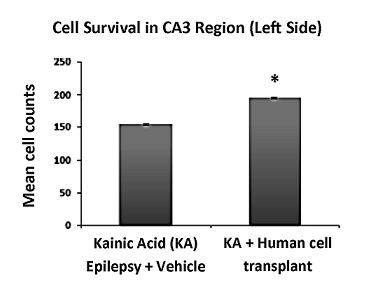Competitive Advantages
- A novel epileptic biomarker
- Potential allogeneic and autologous stem cell treatment
- Human cell derived epileptic models
- Increased epileptic understanding
Summary
USF researchers have developed a method of diagnosing, prognosing, and treating epilepsy or an epilepsy-related disorder via non-epileptic and epileptic neural cells and cell cultures. These human neural stem cells and epileptic neural cells are harvested from adult patients undergoing neurosurgical resection procedures. Novel miRNAs associated with epilepsy have been identified from these extracted cells. The profiles of these miRNAs in the brain provide deep insight into the understanding of the epileptic disease pathology. These cells have been found to express various transcription factors, proteins, and surface antigens such as nanog, SSEA-4, OCT-4, MIR-34B, MIR-34C and MIR-592 which can be used as biomarkers, as diagnostic tools, and for transplantation. This novel method may be applied to other neurological disorders as well where a neurosurgical resection, ablation, electrode implantation or similar brain tissue manipulation is typically used.

Subjects with KA-Induced Epilepsy who Received Transplanted Human Cortical Cells Displayed Significantly Higher Cell Survival
Desired Partnerships
- License
- Sponsored Research
- Co-Development